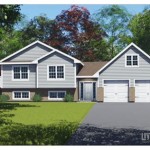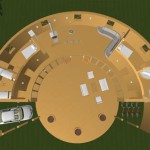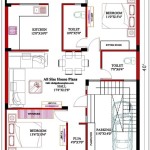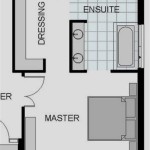Finding Original House Plans: A Guide to Historical Architectural Documentation
Original house plans offer a valuable glimpse into the architectural and social history of a building. They provide a detailed record of the building's initial design, materials, and construction methods. These plans can be invaluable for homeowners seeking to restore a property to its original condition, researchers studying architectural styles, or historians investigating the evolution of residential design. However, locating these original plans can often be a challenging, though rewarding, endeavor.
The term "original house plans" generally refers to the architectural drawings created by the architect or builder during the initial design and construction phase of a house. These plans typically include floor plans, elevations, sections, and details of various building components. They often contain specifications regarding materials, dimensions, and construction techniques. Unlike derivative plans or later renovations, original plans represent the building as it was initially conceived and built.
The significance of obtaining original house plans extends beyond simple curiosity. For homeowners, these plans can be crucial for accurate renovation or restoration projects. They provide precise details about the original layout, materials, and finishes, ensuring that any modifications maintain the architectural integrity of the structure. Furthermore, these plans can be required for historical preservation efforts, grant applications, or compliance with local historical district regulations. For researchers and historians, original plans offer primary source material for studying architectural styles, construction practices, and the social context of housing in a particular period. These documents can shed light on the lives of past residents and the evolution of neighborhoods.
Key Point 1: Identifying Potential Repositories of Original House Plans
The first step in finding original house plans involves identifying potential repositories that might hold these documents. The location of these plans often depends on the age of the house, its geographic location, and the historical practices of record-keeping in the area. Several types of institutions and organizations are commonly known to house architectural drawings and related records.
Local historical societies and museums frequently collect and preserve documents related to the history of their communities. These organizations often receive donations of historical materials from local residents, including architectural plans. Searching the catalogs and archives of these institutions can prove fruitful, particularly for older homes with local historical significance. Reaching out to local historical societies directly can also provide invaluable leads. The staff often possess extensive knowledge of local history and archival resources.
County and city government archives are another vital resource. Building permits and related architectural plans are often filed with local government agencies. The specific department responsible for these records varies depending on the municipality, but common departments include planning, building inspections, or records management. Accessing these records may require navigating bureaucratic procedures, but the potential rewards are significant. Many municipalities are in the process of digitizing their records, making online searches possible. However, even if records are not digitized, physical searches of archival materials are often permitted.
University architectural libraries and special collections represent another avenue for investigation. Many universities maintain extensive collections of architectural drawings, photographs, and other related materials. These collections often include plans for residential buildings, particularly those designed by prominent architects. University archives may also hold records related to local architectural firms or building contractors, which could include house plans. Contacting the librarians and archivists responsible for these collections is essential, as they can provide guidance on searching the catalog and accessing the materials.
State archives and historical commissions represent a broader scope for finding original house plans. These institutions often hold records related to historic preservation efforts and architectural surveys. State archives may also contain records related to state-funded building projects, which could include residential buildings. State historical commissions often maintain databases of historic properties, which may include information about the original architects and the availability of architectural plans. These databases can provide a valuable starting point for research.
Private collections and architectural firms themselves can sometimes hold original house plans. If the architect or builder of the house is known, contacting their descendants or the firm (if it still exists) could lead to the discovery of original plans. Some architectural firms maintain their historical records, while others may have donated them to archives or historical societies. Real estate records, particularly those associated with the original construction of the house, might also reference the existence of architectural plans. Deed books, mortgages, and other property records can sometimes provide clues about the architect or builder involved in the project.
Key Point 2: Utilizing Online Resources and Databases
The advent of the internet has significantly simplified the process of searching for original house plans. Numerous online resources and databases have emerged, offering digitized collections of architectural drawings, historical maps, and other relevant materials. These resources can provide a convenient and efficient way to conduct preliminary research from the comfort of one's own home.
Online databases of historical maps, such as those provided by the Library of Congress and various state archives, can provide valuable contextual information about the house and its surroundings. Sanborn Fire Insurance Maps, in particular, are a rich source of information about the size, shape, and construction materials of buildings in urban areas. These maps were created for fire insurance purposes and provide detailed information about building footprints, roof types, and construction materials. While they don't typically include detailed floor plans, Sanborn maps can help to establish the historical context of the house and identify potential changes over time.
Online archives of newspapers and periodicals can also be helpful in locating information about the architect or builder of the house. Historical newspaper articles often mention new construction projects and may even include photographs or drawings of the house. Obituary notices for architects and builders may also provide clues about the location of their records. Online databases such as Newspapers.com and GenealogyBank offer access to millions of digitized newspaper pages, making it easier to search for relevant information.
Architectural drawing databases, such as those maintained by the Art Institute of Chicago and the Avery Architectural & Fine Arts Library at Columbia University, offer access to digitized collections of architectural drawings. These databases often include plans for residential buildings, particularly those designed by prominent architects. Searching these databases requires using keywords related to the architect, the location of the house, and the architectural style. Furthermore, many libraries and archives have created online finding aids for their architectural collections. These finding aids provide detailed descriptions of the contents of each collection, making it easier to identify relevant materials.
Genealogical websites and online family history resources can also be helpful in locating information about the previous owners of the house. Tracing the history of ownership can sometimes lead to the discovery of records related to the original construction of the house. Genealogical websites such as Ancestry.com and FamilySearch offer access to census records, property records, and other genealogical resources. These records can help to identify the original owner of the house and their potential connections to architects or builders.
Key Point 3: Strategies for Accessing and Interpreting Original House Plans
Once potential repositories of original house plans have been identified and online resources have been explored, the next step involves accessing and interpreting the documents. This process often requires visiting archives and libraries in person and carefully examining the architectural drawings and related records. Understanding the conventions and terminology used in architectural plans is essential for accurately interpreting the information they contain.
Contacting the archives or libraries in advance of a visit is crucial. This allows for confirming their hours of operation, access policies, and any restrictions on the use of archival materials. It is also advisable to inquire about the availability of photocopying or scanning services, as making copies of the plans is often necessary for further study. Many archives require researchers to register and obtain a research card before accessing their collections. Furthermore, it is important to familiarize oneself with the archive's rules regarding the handling of fragile documents and the use of cameras or other electronic devices.
When examining original house plans, it is important to pay close attention to the details of the drawings. Floor plans, elevations, sections, and details provide different types of information about the building's design and construction. Floor plans show the layout of rooms and the location of walls, doors, and windows. Elevations show the exterior appearance of the building from different angles. Sections show a vertical cut through the building, revealing the interior construction. Details provide close-up views of specific building components, such as windows, doors, and trim.
Understanding the conventions and terminology used in architectural plans is essential for accurately interpreting the information they contain. Architects often use abbreviations, symbols, and notations to convey information about materials, dimensions, and construction techniques. Familiarizing oneself with these conventions is necessary for deciphering the plans. Architectural dictionaries and online resources can provide definitions of common architectural terms and symbols. Furthermore, consulting with architectural historians or preservation professionals can provide valuable insights into the interpretation of original house plans.
The condition of original house plans can vary significantly. Some plans may be well-preserved, while others may be damaged, faded, or brittle. Handling fragile documents with care is essential to prevent further damage. Wearing gloves and using archival-quality supports can help to protect the plans from deterioration. It is also important to avoid exposing the plans to direct sunlight or excessive humidity, as these conditions can accelerate the degradation of the paper and ink.
Finally, remember that original house plans are just one piece of the puzzle. Supplementing the information contained in the plans with other sources, such as historical photographs, building permits, and newspaper articles, can provide a more complete understanding of the house's history and design. Combining archival research with physical examination of the house itself can reveal valuable clues about its original construction and subsequent alterations.

Find House Plans For Your Old Blueprint Search Nethouseplans

Historic Home Plans How To Find Original Brooklyn Row House Blueprints Brownstoner

How To Get Blueprints Of Your House

Find Old House Plans Here Historic Bungalows More Bungalow Floor Craftsman

Find Old House Plans Here Historic Bungalows More Craftsman Architectural Floor

House History 101 How To Research Your Pad And Find Plans Eichler Network

How To Find The Original Floor Plans For Your House

Find Old House Plans Here Historic Bungalows More Bungalow Floor Vallonia

13 Adobe House Plans Find Your Perfect Design Building Renewable

How Old Is My House Hm Land Registry








